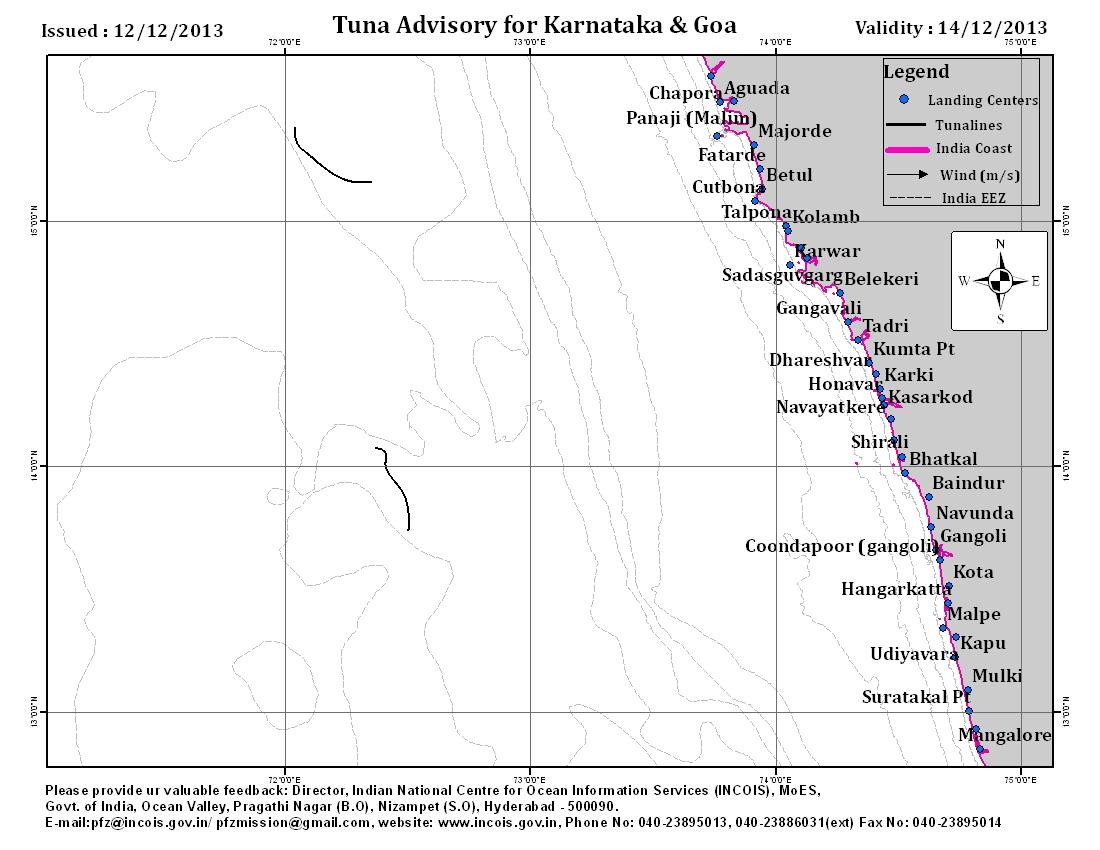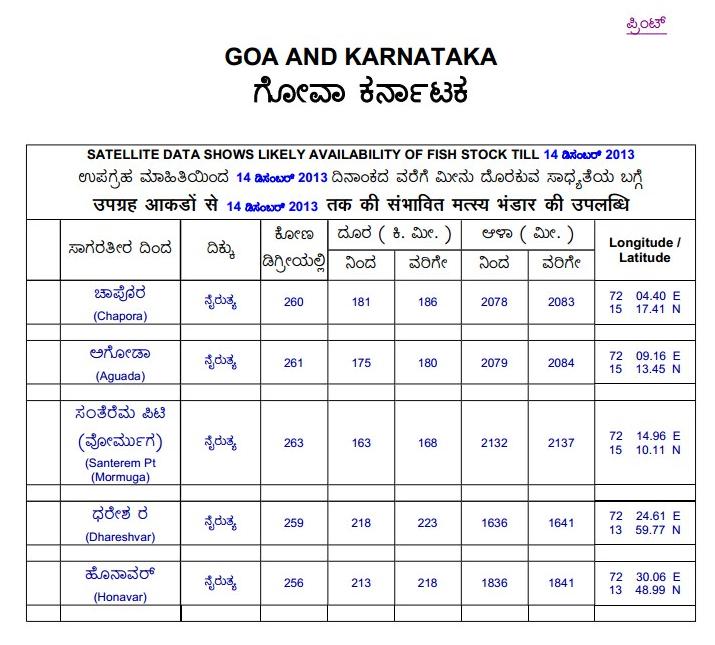
Fishery for oceanic tuna is in the developing stage in India. Landings have been continuing to be low. The fishery resource potential of oceanic tuna in the Indian EEZ is 213,000 tons with an estimated composition of yellowfin at 54 percent, skipjack at 40 percent, and Big-eye at 6 percent. Landings of oceanic tuna in India have been negligible. Since there was no specialized fishing fleet in India for tuna harvesting, the Marine Products Exports and Development Authority (MPEDA) has started implementing a scheme for assisting the conversion of existing fishing vessels to tuna long liners for augmenting the production of oceanic tuna since 2006. Since the recent past, there has been a huge response from the industry for conversion of the vessels to long liners and hence, the industry and MPEDA have requested INCOIS to develop an advisory system in similar lines to the PFZ Advisory services.
Tuna inhabits a wide range of ecosystems, and hence searching for these resources by fishery fleets/vessels is a high-cost activity. Keeping in view of the demand from the industry, ESSO-INCOIS has conducted a few hind-cast exercises based on the geo-referenced tuna catch details and the remote sensing data products. Based on the results of the hind-cast exercises, INCOIS has started experimental Tuna Fishery Advisories and disseminated them to selected user groups for further use and validation. Based on the feedback from the users and validation results, these experimental Tuna fishery advisories have been operationalized from November 2010 onwards. ESSO-INCOIS has streamlined the operational generation of Tuna fishery advisories using the satellite-derived parameters viz. Sea Surface Temperature, Chlorophyll, and Kd490 (Water Clarity). The advisories are being sent to the tuna long liners through the website (WebGIS) and emails. (Figure: An example Tuna-advisory map showing demarcated areas for Tuna fishing)

Tunas are highly migratory and commercially important species. In order to be able to manage our Tuna resources in skilled manner, data on the habitat preferences and migration routes of Tuna is very important. Considering the gaps in the knowledge on the habitat preferences and migration routes of Tuna in the Indian Ocean, an R&D project entitled